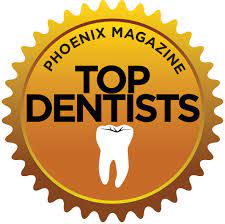Delta Dental of Arizona Names Best & Worst Halloween Treats for Teeth
Chocolate and powdery candies are better for teeth than chewy or hard candies
Little ghosts and goblins will trick-or-treat to collect as much candy as they candy this Halloween, but it’s not just kids who will enjoy the treats. Nearly 80 percent of parents admit they eat their children’sHalloween candy, according to the Delta Dental Children’s Oral Health Survey. But some candies have the potential to do more damage to teeth than others. It’s best to choose candy that melts and disappears quickly, because the longer teeth are exposed to sugar, the longer bacteria can feed on it, which could produce cavity-causing acid.
The best way to protect teeth from decay is to have candy in small portions at limited times, such as after a meal, as dessert or at regular snack times. While no sweets are good for teeth, some are less harmful than others. Delta Dental rates the best and worst treats for teeth on a scale of 1 to 5, with 1 being least harmful.
1. Sugar-free candy and gum with xylitol (such as Spry or Epic): Sugar-free foods don’t contain sugar that can feed on the bacteria in the mouth and produce decay-causing acids. Gum and candy with xylitol may actually protect teeth by reducing the acids produced by bacteria and increasing saliva to rinse away excess sugars and acids.
2. Powdery candy (such as Pixie Stix and Smarties): Sure, powdery candy is packed with pure sugar. But powdery candy dissolves quickly and doesn’t stick to the teeth.
3. Chocolate (such as Hershey’s Kisses): Chocolate dissolves quickly in the mouth and can be eaten easily, which decreases the amount of time sugar stays in contact with teeth. And calciumcould help protect tooth enamel. However, chocolate with fillings, such ascaramel and nuts, is a lot more harmful for teeth than the plain variety.
4. Hard candy (such as lollipops or Jolly Ranchers): Hard candy is tough on teeth because it tendsto be sucked on at a leisurely pace for an extended period of time. Plus,chomping down on hard candy can chip or break teeth.
5. Chewy candy (such as caramels or gummies): Chewy, sticky treats are particularly damaging because they are high in sugar, spend a prolonged amount of time stuck to teeth and are more difficult for saliva to break down. Another way to protect teeth is to give kids somethingother than candy. Nearly 25% of parents hand outnon-candy items to trick-or-treaters, such as toys, money or fruit.
For additional tips on the worst Halloween treats for teeth and how to help keep children’s teeth healthy during Halloween and all year long, visit the Tooth Fairy’s Halloween website at ToothFairyTrickyTreats.com.
Sources; 2013 Delta Dental Children’s Oral Health Survey and Dr. Bill Kohn, DDS, vice president of dental science and policy for Delta Dental Plans Association. Dr. Jeanette MacLean, DDS, of Affiliated Children’s Dental Specialists is an area expert for Delta Dental of Arizona.


Comments are closed.